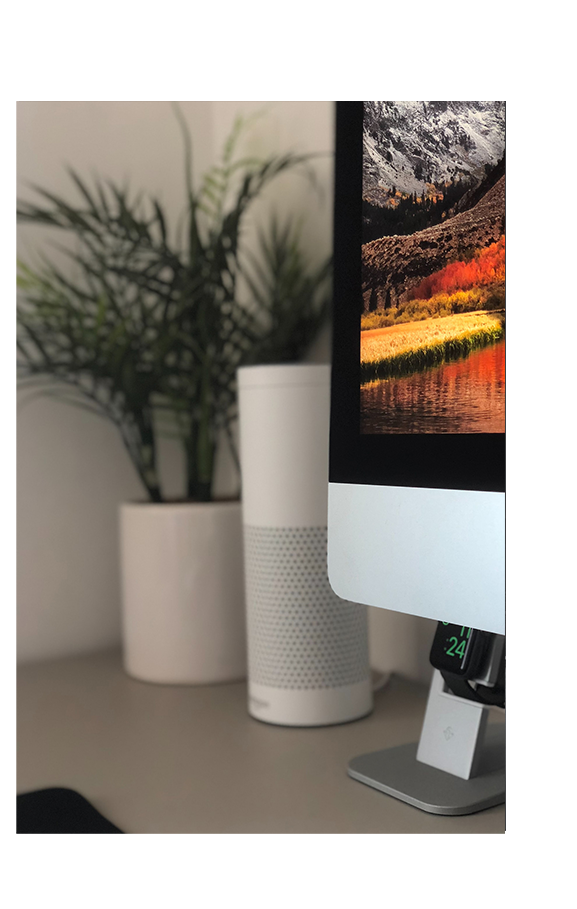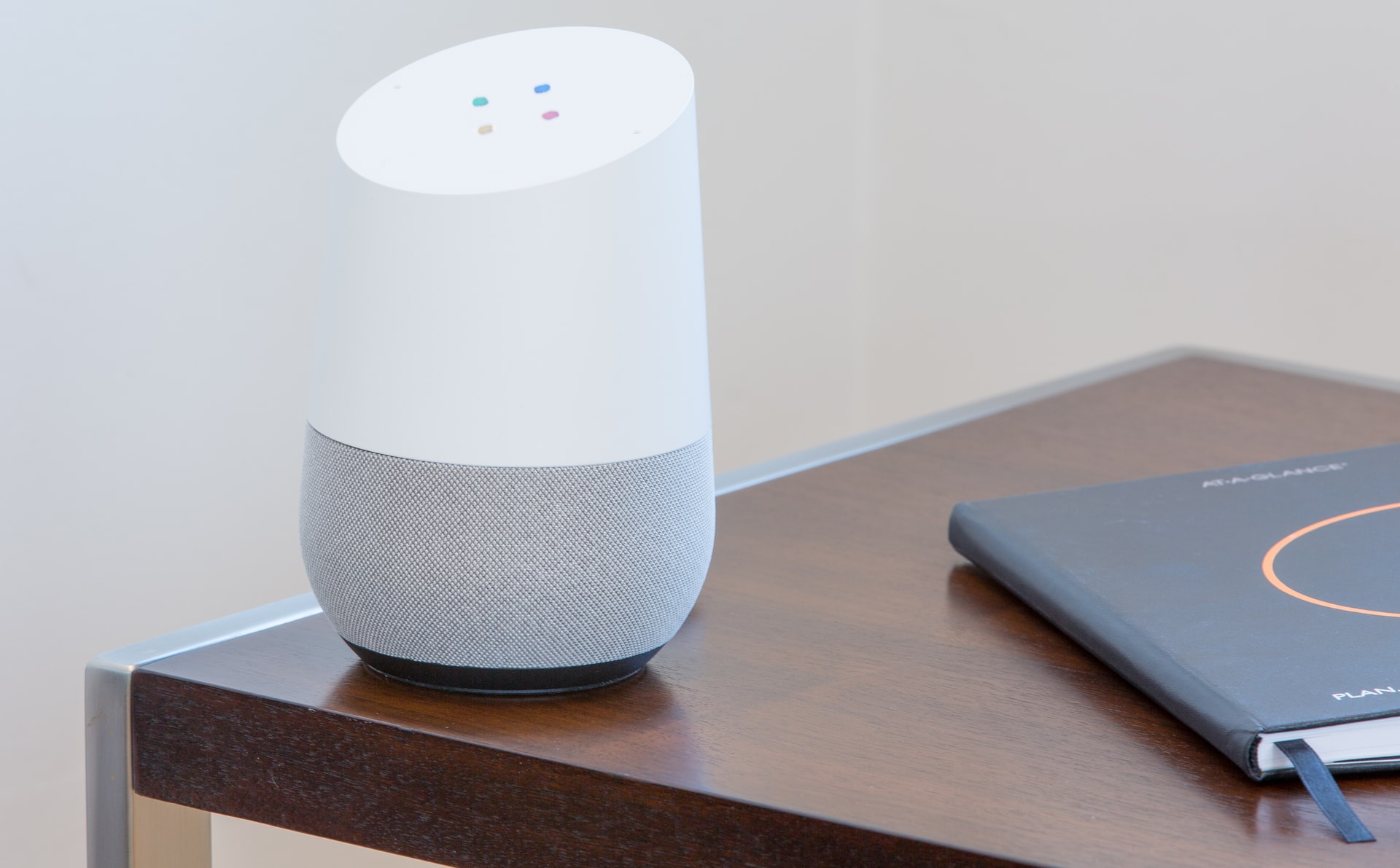Smart devices & voice technology accelerate your business
Imagine leading a staff meeting, setting the lighting, bringing up the projector, switching between PowerPoint slides, printing out documents for your colleagues…all with the sound of your voice. In today’s complex and data driven world, we’ve grown increasingly dependant on timely and accurate information to make the right decisions. The desire to do more things with less allows your business to focus on the things that matter. Not too long ago the weather was only accessible through weather channels and the news, but today we are able to say a few words into a speaker and receive current weather updates and whether we need to carry an umbrella.
Where voice recognition technology and smart devices were previously the stuff of science fiction, they have now become commonplace and accepted as part of our daily lives. As leading providers of SEO Perth, we know how to ensure your website is SEO ready for this new and exciting technology. Amazon’s Alexa has become the leading commercial pioneer in this market, with Google Home following closely behind. With over 20 million Alexa devices and over 6.8 million Google Home devices sold in 2017, it’s safe to say that voice technology is a digital trend that has already changed lives from a consumer perspective…but how will it change how businesses operate and connect us as consumers?

Smart devices & voice technology accelerate your business
The ability for voice technology to integrate with smart devices is a feature that has immense potential to influence the way a business operates. So far Google Home allows consumers to control smart devices such as thermostats, lights and other gadgets with just the sound of their voice. Additionally, Alexa has slowly penetrated the vehicle market.
This undoubtedly means that companies such as Google and Amazon are most likely to steamroll the release of more smart devices that are compatible with their smart speakers. This can change the day to day operation of businesses by making tasks and duties less time and resource consuming. Some businesses have already started to implement voice technology in offices and this has created potential for businesses such as an increase in long term profitability due to tasks and duties being executed more efficiently.
In scenarios where they can use voice technology in the seamless execution of business meetings and other daily tasks that require face to face interaction. Printing documents, scheduling meetings, setting up calls, booking meeting rooms could be tasks executed by the sound of your voice. Cutting these interactions will essentially revolutionize business operations and give them a competitive edge in productivity, efficiency and will allow businesses to channel their resources and time to other demanding tasks.
While voice technology aims to reduce these interactions, businesses should be wary of how this could affect client and employee relationships. Cutting out regular face to face interactions with clients creates the impression that the client is not really valued and can be reduced to communication through an automated voice system. The latter could exist for employees, who due to voice technology rarely have to leave their office and interact with work colleagues. Therefore, businesses have to establish a balance where there is focus on building and maintaining relationships through face to face interaction and team building while using voice technology.
Much like any other technological advancement, there will be concerns with the security and safety of these smart devices. The fact that these devices could potentially be in every room in business offices, coupled with their capability in remotely accessing a company’s documents in a matter of seconds, could present a massive security risk in relation to private information being leaked. For example, concerns surrounding leaked private conversations with clients could see companies being liable for breaking confidentiality agreements therefore creating lawsuits that could essentially cost companies even more.
So how should your business prepare for smart devices and voice technology?
Implementing voice technology in a business’ office space is a worthwhile investment in improving efficiency and productivity while cutting costs, but implementing this technology goes far beyond than just placing devices in rooms. Your business – regardless of its size – can prepare for voice technology and smart devices by:
- Doing the research– Dedicating time to researching how voice technology and smart devices work will help businesses in making the right decision when it comes to choosing the right brand and deciding on a budget. Some questions your business may want to consider are:
- What is it going to cost
- What are our options?
- What devices are compatible with voice technology?
- Do we really need voice technology, or should we wait for others to adopt it?
- Planning and organising office spaces– Using voice technology and smart devices effectively means strategically positioning them in places whereby people’s voices can reach them without any obstructions. Therefore, office furniture and tools will have to be reorganized efficiently to ensure there are no obstructions. While office space has to be adjusted to accommodate the new technology, your business has to consider how this is going to affect productivity and collaboration as a result of shifting employees work environments. Further-more changes made to the office space must align with relevant Occupational Health and Safety legislation and codes of practice to provide a safe system of work.
- Restructuring networks if needed– The key in making sure this new technology works seamlessly is by ensuring the business internet wireless network is at a level that can manage the increased load. This will help avoid scenarios where the network is down, and business operations are interrupted.
- On- boarding in house technicians– Having in house technicians will help in troubleshooting any unforeseeable issues with the new technology. This will ensure that the business is not at a complete standstill for a prolonged period if anything goes wrong
- Talk to brand representatives– No one knows the brand more than the brand itself. If your business decides to go with a specific brand such as Google, having a meeting with brand representatives beforehand will help the business know more about the technology and what it entails. Questions and concerns answered by brand representatives will simplify the decision and implementation process.
- Training employees– To ensure that employees of a business use this new technology effectively, they will initially have to be trained in the safe and secure use of this new technology.
Implementing voice technology and smart devices translates to a form of organisational change that may mean some employees tasks and duties may be redundant. Therefore, this change needs to effectively communicated to employees to avoid employee unrest and uncertainty.
Smart technology is undoubtedly the future of many homes and businesses. The degree of benefit to your business from integrating smart technology is entirely dependent on the business’s needs, structure and nature. While it presents a number of concerns and risks, it is technology that is already giving some businesses a competitive edge and it could also do the same for your business.
Today’s competitive business landscape is characterised by high levels of innovation and an incessant desire for businesses and organisations to adopt industry-leading behaviors that will help establish their positions in different markets. The way to achieve this is through engaging in a process of strategic marketing, business strategy with design-led communication.







